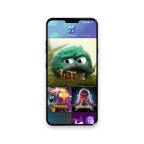Learn How to Photograph an Eclipse Without Damaging Your Eyes or Your Camera
The American Academy of Ophthalmology and the American Academy of Optometry are teaming up to offer tips on how to safely photograph an eclipse. On Aug. 21, Americans of all ages will come together to witness a single, inspiring event – a total eclipse of the sun. The last time anyone saw the sun disappear in the United States was in 1979. But there is one thing that sets this month’s total eclipse apart from others: Smartphones. Millions of ordinary people are expected to use smartphones and digital cameras to photograph this eclipse. Eye care professionals are concerned that first-timers might train their cameras on this phenomenon, unaware of the damage they can do to their eyes.
The most important safety tip to remember is to never look directly at the sun. Viewing the sun directly, even for brief periods, can cause permanent damage to the retina and result in blindness. Your eyes need specially designed solar eclipse glasses, and your camera needs a specially designed solar filter.
“Before pointing your camera at the sun, you need to get a special-purpose solar filter and put it over the camera lens,” said Russell N. Van Gelder, M.D., Ph.D., a clinical spokesperson for the American Academy of Ophthalmology. “Never look at the sun through an unfiltered camera, telescope, binoculars, or other optical device. The concentrated solar rays will damage the filter, and injure your eyes. Also, do not use solar eclipse glasses to look through a camera, binoculars or a telescope. The sun can melt the filter and damage your eyes.”
With all these restrictions, is it worth trying to take a picture?
Ralph Chou, OD, MSc, FAAO a professor emeritus of optometry and vision science at the University of Waterloo, says that with a little effort and preparation, you can make good photos. Dr. Chou has spent a lifetime eclipse chasing. This month’s will be his 19th total eclipse.
Dr. Chou connects his DSLR camera directly to a telescope so that the sun fills the entire frame. Watch this video to see how he has perfected his technique over the years. No matter what kind of camera you own, one or more of the following techniques can be used to shoot a solar eclipse:
- Buy a solar filter or modify your eclipse glasses to function as a solar filter for your smartphone. Cut your glasses in half and tape one eyepiece over your smartphone camera lens.
- Take the filter off during totality. Totality is when the moon entirely blocks the sun’s bright face. The path of totality for the Aug. 21 eclipse stretches from Oregon to South Carolina. Unless you’re in the path of totality, keep your solar eclipse glasses on throughout the eclipse.
- Use a tripod to keep your camera stable.
- Use a remote trigger. With a remote, you can adjust settings and shoot the photo while keeping your camera stable.
- Practice. Take photos just after sunset during twilight to get an idea of what the light levels will be like during totality.
- Shoot photos of the moon to learn how to manually adjust the focus on your camera. Tap the screen and hold your finger on the image of the moon to lock the focus. Then slide your finger up or down to darken or lighten the exposure.
- A telephoto lens system is a must-have for eclipse photography with a smartphone. There are zoom lenses for smartphones designed solely to provide magnification without resorting to digital zoom.
- Try the pinhole effect. This eclipse effect is easily captured with point-and-shoot cameras. Use a straw hat or a kitchen sieve and allow the sun’s shadow to fall on a piece of white cardboard placed several feet away. The small holes act like pinhole cameras and each one projects its own image of the eclipsed sun.
Make sure you purchase solar eclipse filters and glasses from reputable manufacturers. There have been reports that some companies are selling counterfeit products labeled as if they conform to international safety standards. The American Astronomical Society has listed on its website companies whose products are known to conform to international standards.






